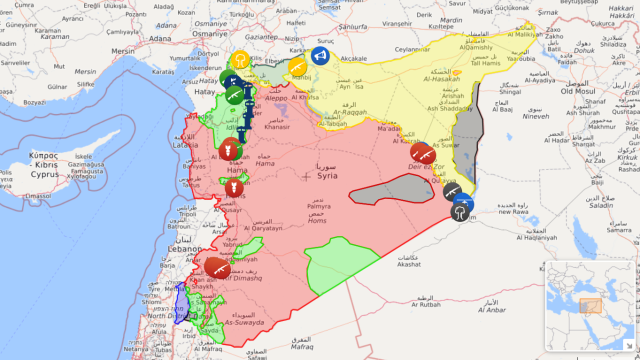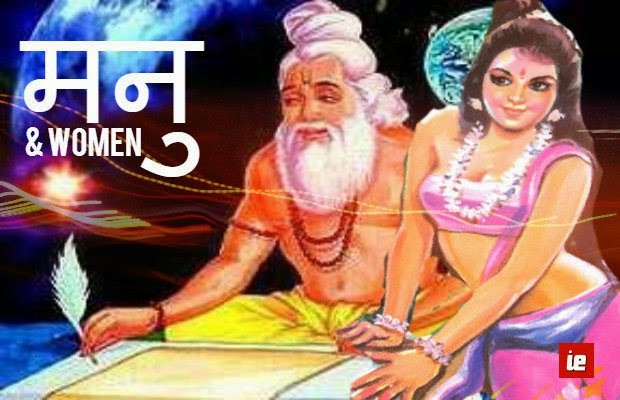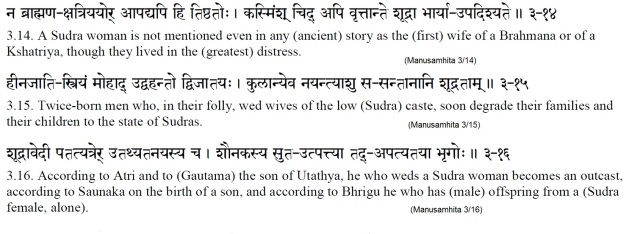
There has been a huge spurt in the number of social media posts on Syria during the past few days. People are sharing posts with photos and videos saying that the world is not taking note of the developments in Syria.
The context is the Syrian government’s moves to take back East Ghouta from so-called “rebels”. East Ghouta, a pocket lying just 15 km east of the Syrian capital Damascus, has been held by “rebels” (basically terrorists) affiliated to Al-Qaeda and similar groups for quite some time.
There has been a large number of shellings and attacks on Damascus from East Ghouta. At least 116 people, including 18 children and 14 women have been killed as a result of these attacks since 16 November, according to pro-“rebel” sources . Now the Syrian government has moved to take back East Ghouta, following which the media campaign that we are now seeing began.
The source of much of the material that is being shared in Facebook, WhatsApp and so on are Western media outlets, including The New York Times and The Guardian, and also major West Asian media outlets such as Al Jazeera, Al Jazeera’s affiliate AJ+, and Al Arabiya. Why that is the case, I’ll get to in a while.
There has been a war going on against Syria for long now, with the US military itself being directly involved for more than five years in an attempt to topple the Syrian government.
On the frontline of the war against Syria are so-called “rebels”, led by some of the most vicious religious fundamentalists and terrorists in this planet. The “rebels” are backed by the US and its NATO allies, as well as by the Gulf monarchies led by Saudi Arabia.
Who are these “rebels”?
Leading the pack is Jabhat al-Nusra (al-Nusra front), which was renamed Jabhat Fateh al-Sham, and renamed again as Tahrir al-Sham after its merger with some other groups. The al-Nusra Front is the Syrian branch of Al-Qaeda. They are the most monstrous and murderous of all “rebel” groups.
Then there are, among others, Jaysh al-Islam, the proxy army of Saudi Arabia (it is financed by Wahhabists from Saudi and Kuwait), and Ahrar al-Sham, the proxy army of Turkey.
Another one is Harakat Nour al-Din al-Zenki, which beheaded a 12-year-old Palestinian child supposedly because they suspected him of spying, and then posted the video of the beheading online!
What do the “rebels”/terrorists want?
Does it need to be explained what the Al-Qaeda stands for? To say the least, they are fighting for a society where women would be treated as slaves, and where minorities would be second-class citizens (that is, if they are not killed off). This is based on their fundamentalist religious worldview of Wahhabism.
Why are Saudi and other Gulf monarchies supporting the terrorists?
The Arab countries of the Persian Gulf, except Iraq, are ruled by monarchies. They are led by Saudi Arabia, a medievalist kingdom which has been funding religious fundamentalist and terrorist activities across the world.
Syria is a problem for the Gulf monarchies, because unlike them, Syria is a secular state, and it is a republic. Arab nationalism, which Syria has championed, has always been considered a threat to the reactionary monarchies in the region. As Aijaz Ahmad points out, the historic battle in the Arab region since the late 1940s has been between reactionary monarchical regimes on the one hand, and secular, republican, anti-Zionist and anti-monarchical Arab nationalism on the other.
The Islamist regime of Turkey, another regional power, would also like the Syrian government gone.
Why is the US supporting terrorists?
Anybody who has observed what happened to Iraq and Libya would know at least part of the answer would be oil. While Saudi Arabia and the other oil-rich Gulf monarchies have been staunch allies of the United States, Syria has maintained its independence. Its policies have not been sufficiently beneficial to US corporations.
Syria is the last remaining representative of the kind of Arab nationalism mentioned earlier. The US has, for long, propped up reactionary Islamist forces and regimes to fight Arab nationalist and socialist forces in the region which maintained an anti-imperialist, anti-Zionist stance. Syria, on the other hand, was closely aligned with the socialist block when it existed. In the more recent years, it has been aligned with Iran, another country with a government that the US considers a “threat”.
Syria has also been historically a strong opponent of Israel, with which it shares a border, and which has been in occupation of a part of Syria, the Golan Heights. Syria shares a close bond with the Palestinian people, and has stood solidly in support of the Palestinian cause. It has warm ties with Hezbollah, which played the leading role in fighting and pushing Israel out of Southern Lebanon, which the Zionist regime had occupied for 18 years. Once the Syrian government falls, Israel would have no Arab regime in its neighbourhood as a major adversary.
Arab nationalist forces having faced defeat practically everywhere else, Syria is now the last one standing. The US wants it gone, and hence its attempts to bring about “regime change” in Syria.
For this purpose, they have been aiding the terrorists backed by the Islamist regimes in the region, with funds, arms and military support.
Many of the most hideous Islamist forces in the world have been backed by the US and its allies. The Mujahideen in Afghanistan which morphed into the Taliban, for instance, was backed by the US.
Even the Islamic State was a product of the destruction of Iraq by the US and its allies.
Why the media campaign now?
The West Asian region has been mired in wars for a long time now, and there has been a number of occasions in the recent years when battles were fought to wrest control of cities from the hands of terrorist groups.
More than 3,200 civilians were killed in the battle by a US-led coalition to take back the Syrian city of Raqqa from the Islamic State. The US had even rejected a ceasefire that the UN requested to evacuate civilians.
About 11,000 civilians were killed during the battle by US-backed Iraqi forces to wrest control of the Iraqi city of Mosul from the Islamic State.
But did we see the kind of outcry and media campaign that we see today demanding that the US should halt the fighting? No.
Instead, such campaigns are reserved for occasions when a sovereign country which refuses to ally with US imperialism is on the verge of taking back a city in its country from the hands of terrorists who enjoy the support of the US and its allies.
Thus we saw the #SaveAleppo campaign in December 2016, when the Syrian army liberated Aleppo, the largest city in Syria, from the terrorists. Now a similar campaign is being mounted as the Syrian government has moved to liberate East Ghouta.
The propaganda around “White Helmets” – who are actually US-UK agents who are embedded with terrorist groups – was a key part of the #SaveAleppo campaign. The same is being repeated now. (Another entity which is to be watched out for while reading Western and Islamist propaganda pieces is the ‘Syrian Observatory for Human Rights’, a pro-terrorist organisation run by ONE person, sitting in Coventry, UK.)
Also note that many of the pictures that are being circulated now do not pertain to the current developments in Syria. Some pictures are several years old, and some pictures are not even from Syria! People have been sharing the 2017 photo of a father and a daughter from the Iraqi city of Mosul, for instance.
Why are the Western media and Al Jazeera backing the War on Syria?
The corporate media in the West has always acted as an integral part of the imperialist war machinery. Media outlets such as The New York Times and The Washington Post had drummed up support for the War on Iraq by falsely claiming that Saddam Hussein had weapons of mass destruction. The Saudi-owned Al Arabiya, of course, is solidly in support of the war against Syria.
Al Jazeera is owned by the despotic ruling family of Qatar. Al Jazeera Arabic had played a major role in fanning the flames of jihadi Islamism with hours and hours of fiery preaching by Muslim Brotherhood preachers on the channel. Al Jazeera English is just the more “sophisticated” mask for Al Jazeera’s politics.
Save Ghouta?
The groups which are controlling East Ghouta currently are three – Jaysh al-Islam, the al-Nusra Front, and the al-Nusra Front’s allied group Faylaq al-Rahman.
Jaysh al-Islam, in 2015, had paraded about 500 civilians – including hundreds of women – who are believers of Alawite Shia religion in CAGES to protect themselves from bombing.
The “Save Ghouta” campaign, just like the #SaveAleppo campaign, is intended to prevent the liberation of Ghouta from the grip of terrorists such as these.
The Syrian armed forces, with the help of Russia, have liberated most of the country from the clutches of the likes of al-Qaeda and ISIS.
The purpose of the “Save Ghouta” propaganda is not to save the people of East Ghouta who are enduring untold hardship, but to gather international support to somehow salvage the failing efforts by US imperialism and its Islamist allies to capture Syria.
There must be international pressure on the US and its allies to withdraw their armed forces from Syria, and to withdraw their support to terrorist groups in the country. If the terrorist groups which have been occupying East Ghouta or any other part of Syria do not surrender, the Syrian government deserves international support to liberate those regions. There must be pressure on the government to do so with the least possible civilian casualties.
As The Morning Star newspaper pointed out as Aleppo was being liberated, “ultimately there will be no negotiated peace with the likes of ISIS and Al-Qaeda. They must be fought and beaten.”































